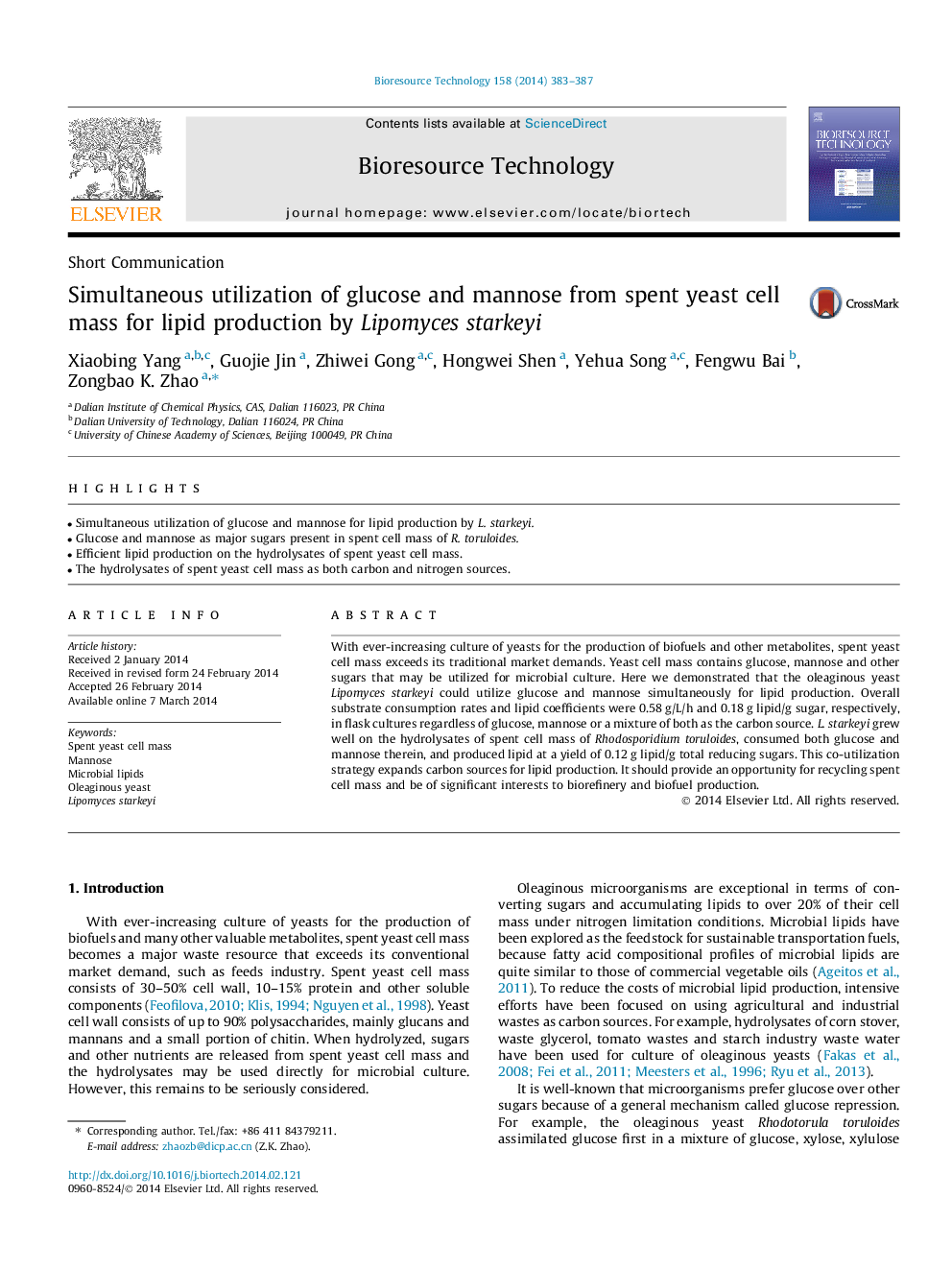| Article ID | Journal | Published Year | Pages | File Type |
|---|---|---|---|---|
| 680838 | Bioresource Technology | 2014 | 5 Pages |
•Simultaneous utilization of glucose and mannose for lipid production by L. starkeyi.•Glucose and mannose as major sugars present in spent cell mass of R. toruloides.•Efficient lipid production on the hydrolysates of spent yeast cell mass.•The hydrolysates of spent yeast cell mass as both carbon and nitrogen sources.
With ever-increasing culture of yeasts for the production of biofuels and other metabolites, spent yeast cell mass exceeds its traditional market demands. Yeast cell mass contains glucose, mannose and other sugars that may be utilized for microbial culture. Here we demonstrated that the oleaginous yeast Lipomyces starkeyi could utilize glucose and mannose simultaneously for lipid production. Overall substrate consumption rates and lipid coefficients were 0.58 g/L/h and 0.18 g lipid/g sugar, respectively, in flask cultures regardless of glucose, mannose or a mixture of both as the carbon source. L. starkeyi grew well on the hydrolysates of spent cell mass of Rhodosporidium toruloides, consumed both glucose and mannose therein, and produced lipid at a yield of 0.12 g lipid/g total reducing sugars. This co-utilization strategy expands carbon sources for lipid production. It should provide an opportunity for recycling spent cell mass and be of significant interests to biorefinery and biofuel production.
